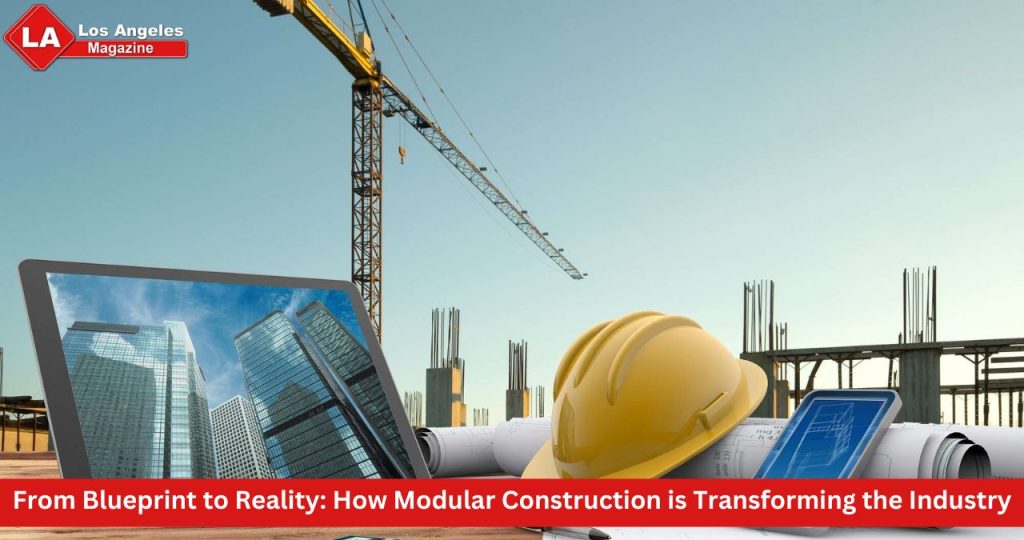Imagine a world where construction projects are completed in record time, with minimal waste and maximum efficiency. This is no longer just a dream; it’s becoming reality thanks to modular construction. This innovative approach is reshaping the industry, allowing builders to create structures off-site before transporting them for assembly at the final location. Gone are the days of lengthy timelines and unpredictable costs. The rise of modular construction offers numerous benefits that cater not only to developers but also to the environment and communities alike. Let’s dive into what modular construction entails and explore how it’s revolutionizing the way we build today.
The Basics of Modular Construction
Modular construction refers to a method where buildings are created using pre-fabricated sections, or “modules,” that are manufactured in a controlled environment. These modules can be constructed simultaneously while site preparation occurs, significantly enhancing efficiency.
Once the modules are built, they’re transported to the final site for assembly. This process minimizes weather-related delays and onsite disturbances. Each module is designed to fit together seamlessly with others, creating a cohesive structure upon completion.
This approach isn’t limited to small structures; it’s applicable for everything from single-family homes to large commercial buildings. Designers have embraced modular techniques as they offer flexibility in layout and aesthetics.
With advancements in technology and materials, modular construction continues evolving. It combines traditional craftsmanship with modern innovation—setting new standards in how we envision building spaces.
Benefits of Modular Construction
Modular construction offers numerous advantages that are reshaping the building landscape. One of the standout benefits is its exceptional time efficiency. With prefabrication occurring off-site, projects can be completed significantly faster than traditional methods.
Cost savings also come into play. Streamlined processes and reduced labor expenses contribute to a more budget-friendly approach. This allows developers to allocate resources more effectively.
Sustainability is another key perk. Modular buildings generate less waste during production and use eco-friendly materials, reducing their carbon footprint. Many designs incorporate energy-efficient systems as well.
Quality control stands out in modular construction as well. Each module undergoes rigorous testing before it reaches the site, ensuring higher standards are met consistently across all units.
Safety is enhanced too; with much of the work done indoors at manufacturing facilities, risks associated with on-site construction are minimized considerably. These combined factors make modular construction an appealing option for innovative builders everywhere.
A. Time and Cost Efficiency
Modular construction is revolutionizing the building process, particularly in terms of time and cost efficiency. The assembly line approach allows multiple modules to be constructed simultaneously in a factory setting. This parallel workflow drastically reduces project timelines.
By minimizing on-site work, contractors can avoid weather delays and other unforeseen obstacles. Structures are completed faster, meaning clients can move into their new spaces sooner.
Cost savings come from several factors as well. Reduced labor costs play a significant role since factory workers typically require less oversight than traditional site crews. Additionally, bulk purchasing of materials leads to lower prices.
Fewer disruptions also mean fewer unexpected expenses arising during construction. All these elements combine to create a more predictable budget for stakeholders involved in modular projects.
B. Sustainability and Environmental Impact
Modular construction significantly enhances sustainability in the building industry. By utilizing prefabricated components, it reduces waste generated on-site. This approach minimizes excess materials and ensures that resources are used efficiently.
The controlled factory environment allows for better management of energy consumption during production. Manufacturers often implement sustainable practices, like recycling materials and using renewable energy sources.
Additionally, modular buildings can be designed for energy efficiency from the get-go. Integrating modular buildings and finding the cheapest gas in Georgia can help reduce costs, improve efficiency, and support sustainability. Features such as high-performance insulation and advanced HVAC systems contribute to lower operational costs over time.
Another vital aspect is mobility. Modular structures can be disassembled and relocated rather than demolished when their purpose changes—this adaptability supports a circular economy model in construction.
These practices not only benefit the environment but also align with growing consumer demand for eco-friendly solutions in architecture and urban planning.
C. Quality Control and Safety
Quality control in modular construction is a game changer. Each module is built in a controlled environment, allowing for rigorous inspection at every stage. This reduces the likelihood of defects and ensures that high standards are consistently met.
Safety also benefits from this method. With most work done off-site, there’s less risk for workers on the job site. The streamlined process minimizes accidents associated with traditional construction sites.
Additionally, standardized processes contribute to predictable outcomes. Teams can focus on refining techniques rather than troubleshooting unexpected issues.
This attention to detail not only enhances quality but fosters trust across stakeholders—owners, builders, and occupants alike will have confidence in the final product’s safety and durability.
The Future of the Industry: Advancements and Trends
The modular construction industry is on the brink of a technological revolution. Innovations like 3D printing and robotics are paving the way for faster, more precise building techniques. These advancements promise to enhance efficiency while reducing labor costs.
Sustainable materials are gaining traction, with manufacturers increasingly opting for eco-friendly options. This shift aligns perfectly with global efforts toward greener construction practices.
Digital tools such as Building Information Modeling (BIM) allow for better planning and collaboration among stakeholders. This leads to fewer errors and smoother project execution.
As urbanization continues, modular solutions offer flexible designs that adapt to changing needs. Whether it’s affordable housing or commercial spaces, versatility is key in meeting demands.
Investors are recognizing these trends, injecting capital into innovative startups focused on modular development. The future looks bright as new players emerge in this evolving landscape.
Conclusion
As the construction industry evolves, modular construction is becoming a game changer. Its ability to streamline processes and deliver projects faster is appealing to developers and clients alike. With efficient use of resources, this method not only cuts down on costs but also reduces environmental impacts—an important consideration in today’s eco-conscious world.
Advancements in technology are driving the future of modular construction even further. Innovations such as 3D printing and smart building techniques are enhancing design flexibility while maintaining high-quality standards. The industry is witnessing a shift towards prefabricated elements that meet growing demands for sustainable practices.
The transformation brought by modular construction is undeniable, paving the way for new possibilities in how we think about building structures. As more stakeholders recognize its benefits, it’s clear that this approach will continue shaping modern architecture and urban development for years to come.



